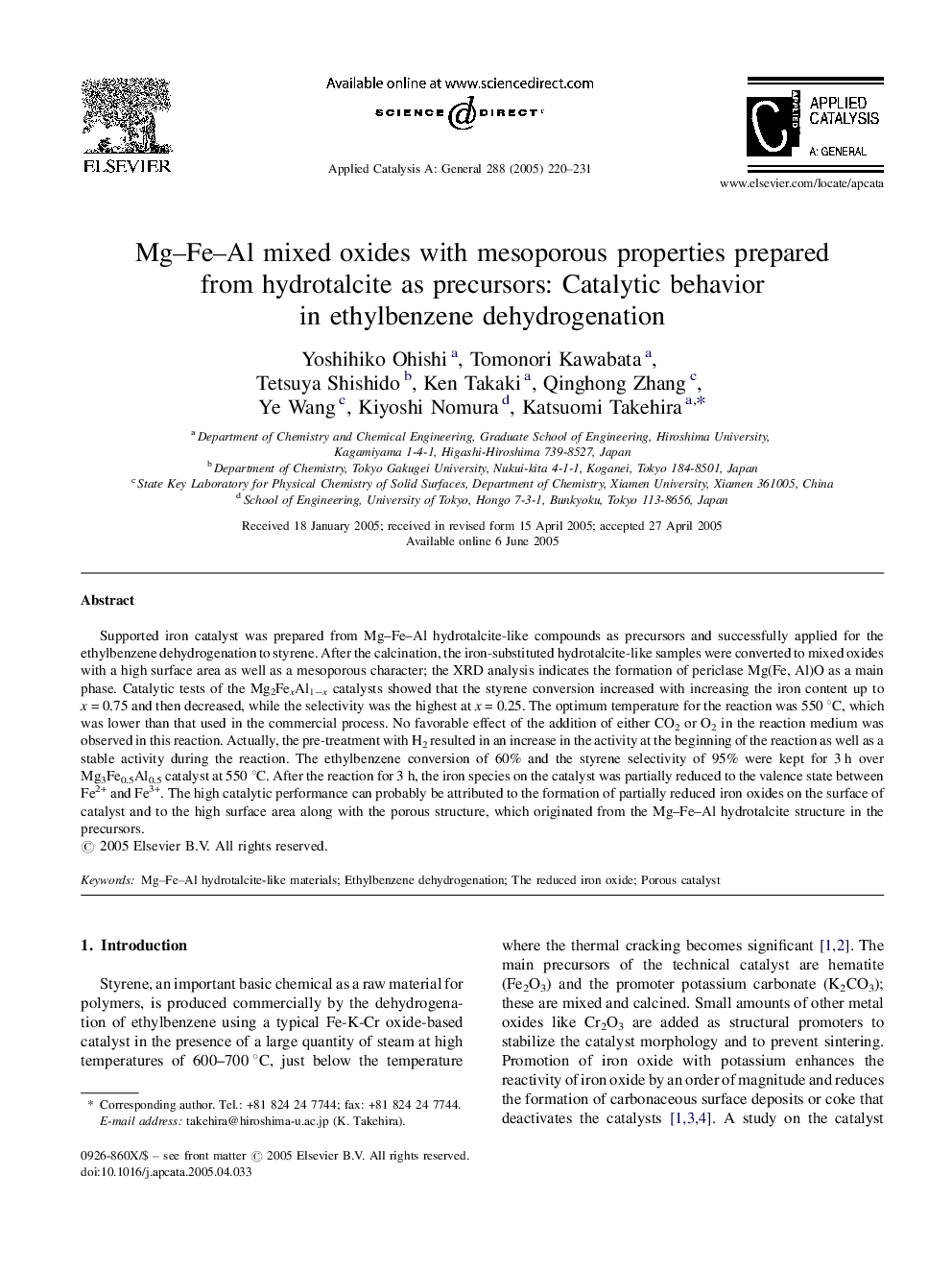| Article ID | Journal | Published Year | Pages | File Type |
|---|---|---|---|---|
| 9607935 | Applied Catalysis A: General | 2005 | 12 Pages |
Abstract
Supported iron catalyst was prepared from Mg-Fe-Al hydrotalcite-like compounds as precursors and successfully applied for the ethylbenzene dehydrogenation to styrene. After the calcination, the iron-substituted hydrotalcite-like samples were converted to mixed oxides with a high surface area as well as a mesoporous character; the XRD analysis indicates the formation of periclase Mg(Fe, Al)O as a main phase. Catalytic tests of the Mg2FexAl1âx catalysts showed that the styrene conversion increased with increasing the iron content up to x = 0.75 and then decreased, while the selectivity was the highest at x = 0.25. The optimum temperature for the reaction was 550 °C, which was lower than that used in the commercial process. No favorable effect of the addition of either CO2 or O2 in the reaction medium was observed in this reaction. Actually, the pre-treatment with H2 resulted in an increase in the activity at the beginning of the reaction as well as a stable activity during the reaction. The ethylbenzene conversion of 60% and the styrene selectivity of 95% were kept for 3 h over Mg3Fe0.5Al0.5 catalyst at 550 °C. After the reaction for 3 h, the iron species on the catalyst was partially reduced to the valence state between Fe2+ and Fe3+. The high catalytic performance can probably be attributed to the formation of partially reduced iron oxides on the surface of catalyst and to the high surface area along with the porous structure, which originated from the Mg-Fe-Al hydrotalcite structure in the precursors.
Related Topics
Physical Sciences and Engineering
Chemical Engineering
Catalysis
Authors
Yoshihiko Ohishi, Tomonori Kawabata, Tetsuya Shishido, Ken Takaki, Qinghong Zhang, Ye Wang, Kiyoshi Nomura, Katsuomi Takehira,
